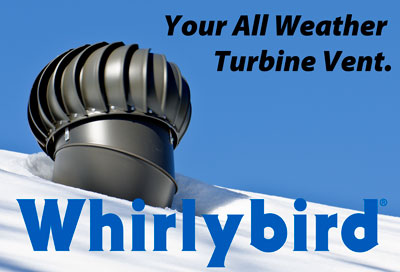My charge controllers, Outback Radian GS8048 inverter, and AGM batteries are housed inside a dedicated plywood and sheet metal equipment shed:
IMG_2706.jpg
Down at the bottom left there is an air intake vent, and the exhaust vents run along the top just above the doors. At the moment, I'm relying on passive convection for cooling, which works fine most of the year. But it's starting to get warm here in Eastern Washington and I'm going to need to actively cool the interior of the shed unless I want the electrolytic capacitors going bad in my charge controllers and inverter after a couple of summers. Right now, at 80 degrees F outside and with the inverter producing 5 kW, it's about 94 degrees F inside the shed and will probably reach 100 degrees by this afternoon. (The hundreds of pounds of equipment and plywood, and the thousand pounds of battery, have considerable heat capacity and it takes a while to warm up in there.)
So, I'm planning to buy a 2,500 BTU Mini Portable Heater and Air Conditioner available from ClimateRight for $450. It's intended for dog houses but should work perfectly for my purpose. The AC compressor consumes 480W. The 730W of cooling capacity is just about a match for the waste heat produced by the Outback Radian running full tilt. Together, the charge controllers add another 200W or so in power dissipation, so the AC unit wouldn't quite be able to keep up, but it would at least reduce the temperature inside.
My question is whether I should power this thing from the Outback Radian inverter or hook up a dedicated off-grid inverter to the battery and power it with that. I'd prefer to not have my cooling system add another AC load to the very device I'm trying to keep cool, and a Cotek SP1000-148 inverter rated at 1000W continuous is relatively cheap (compared to everything else in this shed) at $350. It supposedly can put out 1750 VA for up to a second, which should be plenty enough to start the compressor.
One thing that makes me a little uncomfortable about the Cotek inverter is that it has a GFCI outlet and probably a floating neutral. But is that really an issue for powering a single specialized load outside, not connected to the house wiring at all?
There are two mounting options I see. If I housed the Cotek inverter inside the shed, I'd need to put a plug on one end of a 120V 3-wire cable and connect the other end to an in-use outdoor power receptacle mounted on the shed wall. As an alternative, I could put a hole in the shed wall just big enough for the AC unit's power plug to fit through, and plug in the AC unit directly to the inverter. In either case, I'd connect the Cotek inverter ground to the EGC busbar inside the Outback's load center, which then goes through conduit to eventually wind up at the house's GEC.
Any thoughts on this?
IMG_2706.jpg
Down at the bottom left there is an air intake vent, and the exhaust vents run along the top just above the doors. At the moment, I'm relying on passive convection for cooling, which works fine most of the year. But it's starting to get warm here in Eastern Washington and I'm going to need to actively cool the interior of the shed unless I want the electrolytic capacitors going bad in my charge controllers and inverter after a couple of summers. Right now, at 80 degrees F outside and with the inverter producing 5 kW, it's about 94 degrees F inside the shed and will probably reach 100 degrees by this afternoon. (The hundreds of pounds of equipment and plywood, and the thousand pounds of battery, have considerable heat capacity and it takes a while to warm up in there.)
So, I'm planning to buy a 2,500 BTU Mini Portable Heater and Air Conditioner available from ClimateRight for $450. It's intended for dog houses but should work perfectly for my purpose. The AC compressor consumes 480W. The 730W of cooling capacity is just about a match for the waste heat produced by the Outback Radian running full tilt. Together, the charge controllers add another 200W or so in power dissipation, so the AC unit wouldn't quite be able to keep up, but it would at least reduce the temperature inside.
My question is whether I should power this thing from the Outback Radian inverter or hook up a dedicated off-grid inverter to the battery and power it with that. I'd prefer to not have my cooling system add another AC load to the very device I'm trying to keep cool, and a Cotek SP1000-148 inverter rated at 1000W continuous is relatively cheap (compared to everything else in this shed) at $350. It supposedly can put out 1750 VA for up to a second, which should be plenty enough to start the compressor.
One thing that makes me a little uncomfortable about the Cotek inverter is that it has a GFCI outlet and probably a floating neutral. But is that really an issue for powering a single specialized load outside, not connected to the house wiring at all?
There are two mounting options I see. If I housed the Cotek inverter inside the shed, I'd need to put a plug on one end of a 120V 3-wire cable and connect the other end to an in-use outdoor power receptacle mounted on the shed wall. As an alternative, I could put a hole in the shed wall just big enough for the AC unit's power plug to fit through, and plug in the AC unit directly to the inverter. In either case, I'd connect the Cotek inverter ground to the EGC busbar inside the Outback's load center, which then goes through conduit to eventually wind up at the house's GEC.
Any thoughts on this?


Comment